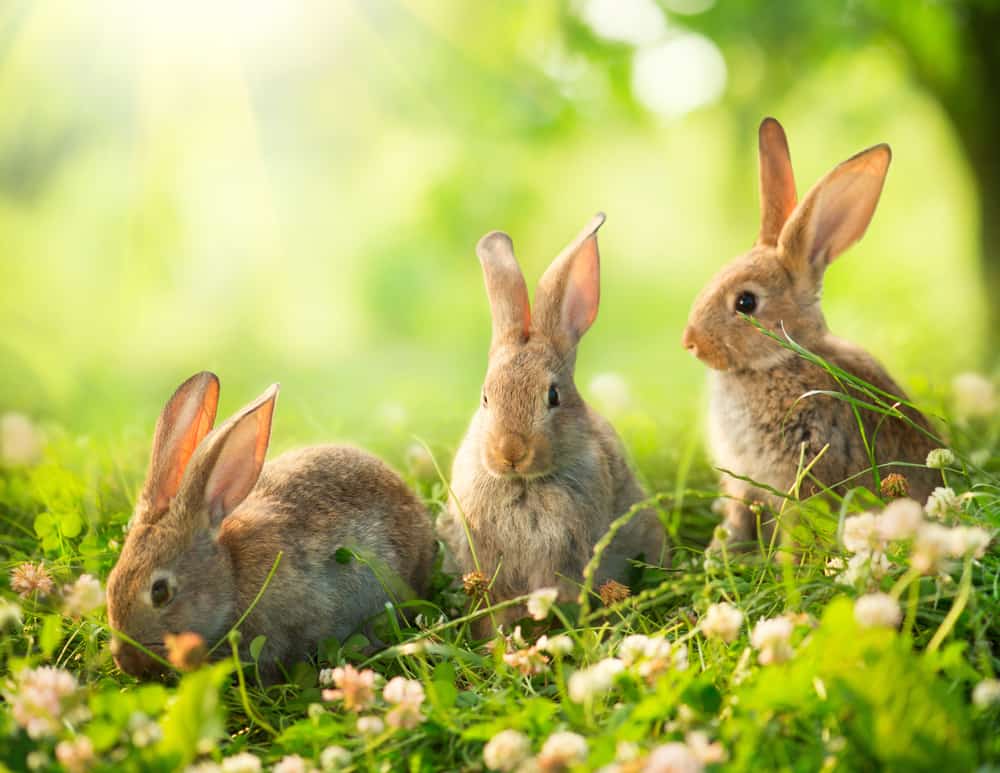Navigating Nature’s Pantry
Wild rabbits, those fleet-footed denizens of fields and woodlands, have adapted over centuries to thrive in their natural habitats. A key factor in their survival is their diet, meticulously honed to ensure their health and vitality. In this article, we embark on a culinary journey through the world of wild rabbits, discovering the diverse array of foods that sustain these creatures and support their place in the intricate web of ecosystems.
Herbivores in Harmony: The Natural Diet of Wild Rabbits
Wild rabbits are strict herbivores, which means they subsist solely on plant-based foods. Their diet is carefully curated by nature to provide the necessary nutrients for their growth, reproduction, and overall well-being. This diet is not only a testament to their adaptability but also showcases the delicate balance of the environment they inhabit.
Fiber is Fundamental: The Role of Grass and Hay
Grasses are a foundational element of a wild rabbit’s diet. In their natural habitats, rabbits forage on a variety of grasses, utilizing the high fiber content to aid in digestion and maintain a healthy gut. Fresh, nutrient-rich grasses provide essential vitamins, minerals, and fiber that contribute to the rabbit’s vitality.
Leafy Greens: A Feast for the Senses
Leafy greens constitute another integral part of a wild rabbit’s diet. They supplement the rabbit’s nutritional needs with vitamins, minerals, and additional fiber. Plants like clover, dandelion greens, plantain, and chickweed serve as both a tasty treat and a valuable source of nutrients for wild rabbits.
Bountiful Blossoms and Weeds
Wild rabbits are opportunistic foragers, making use of a wide range of plants, including flowering plants and weeds. Blossoms from plants like violets, primroses, and sunflowers are not only visually pleasing but also provide essential nutrients. Weeds such as thistles and nettles offer a nutritional boost and contribute to the rabbit’s varied palate.
The Arboreal Delicacies: Tree Bark and Twigs
Rabbits are resourceful eaters, even turning to tree bark and twigs when other food sources are scarce. These materials provide both nourishment and a means of wearing down their ever-growing teeth. Young, tender twigs from various trees, such as willow and apple, are particularly favored by rabbits for their palatability and nutritional content.
The Seasonal Symphony: Adapting to Changing Resources
The diet of wild rabbits evolves with the seasons, showcasing their remarkable adaptability to the ebb and flow of nature. In spring and summer, an abundance of fresh green plants and blossoms provide a varied and nutritious diet. As the seasons shift, rabbits rely on stored energy reserves and may turn to more fibrous foods like tree bark and woody plants during leaner times.
Survival Strategies and Browsing Behavior
Wild rabbits exhibit a browsing behavior, which involves feeding on a wide array of plant materials throughout the day. This approach allows them to access different nutrients and avoid overgrazing any particular area, ensuring the long-term health of their habitats.
The Human Impact: Altered Landscapes and Food Sources
The expansion of human settlements and agriculture has brought about changes in the natural landscapes that wild rabbits inhabit. Urbanization and habitat fragmentation can impact the availability of natural food sources. In some cases, wild rabbits may adapt to these changes by foraging on cultivated plants, which can lead to conflicts with humans.
Conclusion: A Symphony of Sustenance
The diet of wild rabbits is a testament to the intricate dance of nature, where every plant, blossom, and blade of grass plays a role in sustaining these remarkable creatures. Their adaptation to diverse food sources and their ability to thrive in ever-changing environments underscore the resilience and vitality of wild rabbits. As we marvel at their dietary choices, we gain a deeper appreciation for the delicate balance of ecosystems and the role each species plays in nurturing the rich tapestry of life on our planet.

